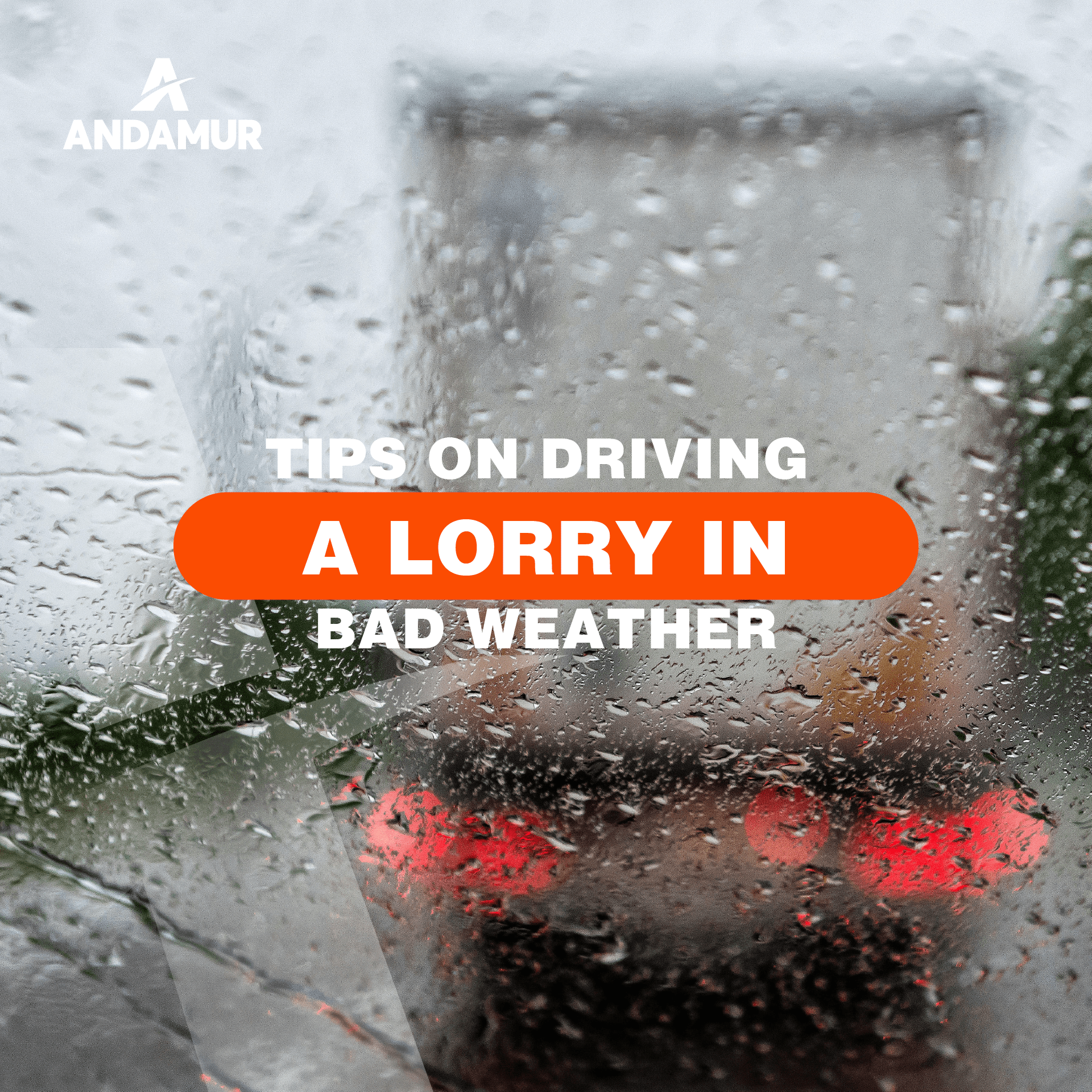Tips on driving a lorry in bad weather

Winter and bad weather conditions can negatively impact driving, in particular when it comes to heavy vehicles. It could be said that rain, snow, wind and fog are professional drivers’ worst nightmare, as they directly affect visibility, traction and the ability to keep the vehicle under control. So, we recommend following some tips when driving a lorry in adverse weather conditions:
- First and foremost, before setting off, you should carry out a full check of all parts of the lorry, with particular focus on the tyres, brakes and lights. Don’t forget specific elements such as chains or winter tyres.
- Increase your safety distance on your entire journey. This will allow you to anticipate any unforeseen events.
- Ensure you have visibility. Clouds and rain reduce the brightness of the sky. This makes it harder to see the horizon which, in turn, causes fatigue to set in earlier. You’ll have to stop more often and make sure not to stay behind other large vehicles for too long.
- Slow down. Be aware that road conditions worsen on rainy, snowy or windy days. There may be puddles of water or road markings that become slippery. To prevent the lorry from sliding or the brakes from not working properly, it’s best to slow down and avoid sudden changes of direction as much as possible.
Below we’ve got some recommendations on what you should bear in mind when it comes to driving when it is foggy, raining or when there are snow or ice on the road:
If you drive a heavy vehicle in windy or foggy conditions:
- When it’s windy, grip the steering wheel tightly, even more so when overtaking.
- Do not slam on the brakes to prevent potential pile ups. Brake intermittently and gently.
- Try to always drive in the right-hand lane.
- Try not to lose sight of the lines on the road.
- Drive with the raidio off or turned down low, so you can hear the sound of other vehicles when visibility is reduced.
- If the fog is very dense, the best thing would be to stop somewhere safe.
If you’re driving with snow on the road:
- Don’t forget your snow chains.
- Be very careful when braking: brake gently and gradually.
- When taking a corner, slow down, anticipate the straight and keep your steering fluid.
- Take advantage of the tracks left by other similar vehicles: other lorries or buses.
- If your wheels lock up due to danger of skidding, release the brake pedal to regain traction and use the engine brake.
- Use low gears downhill and high gears uphill.
If you’re driving on icy roads, you should exercise extreme caution, as it is more difficult to detect.
- Ice can be spotted more easily at night because of the brightness of the road.
- Extra caution should be exercised in the early morning or late afternoon as you’re more likely to come across ice.
- Avoid taking bends too shaprly and drive in high gears.
- Brake gradually and accelerate slowly, smoothly and steadily.
- Steer as straight and smooth as possible.
If you’re driving when it’s raining:
- Turn on the lights to improve visibility and so other vehicles can see you.
- Check that the windshield wipers and heated windshield are working properly.
- Direct the heating towards the windows to prevent fogging.
- Watch out for aquaplaning, the gradual loss of contact between the tyre and the road.
- If there is a storm or heavy rain, pull over somewhere safe, avoiding inclined or elevated areas and always ensure that the lights are on.
- Check the brakes gently on a regular basis so that the moisture in the brake pads also dries out.
- Just like in all other cases, drive at a moderate speed and increase the safety distance.
At Andamur, we’re committed to the safety of professional drivers. Follow these tips and exercise extreme caution.






